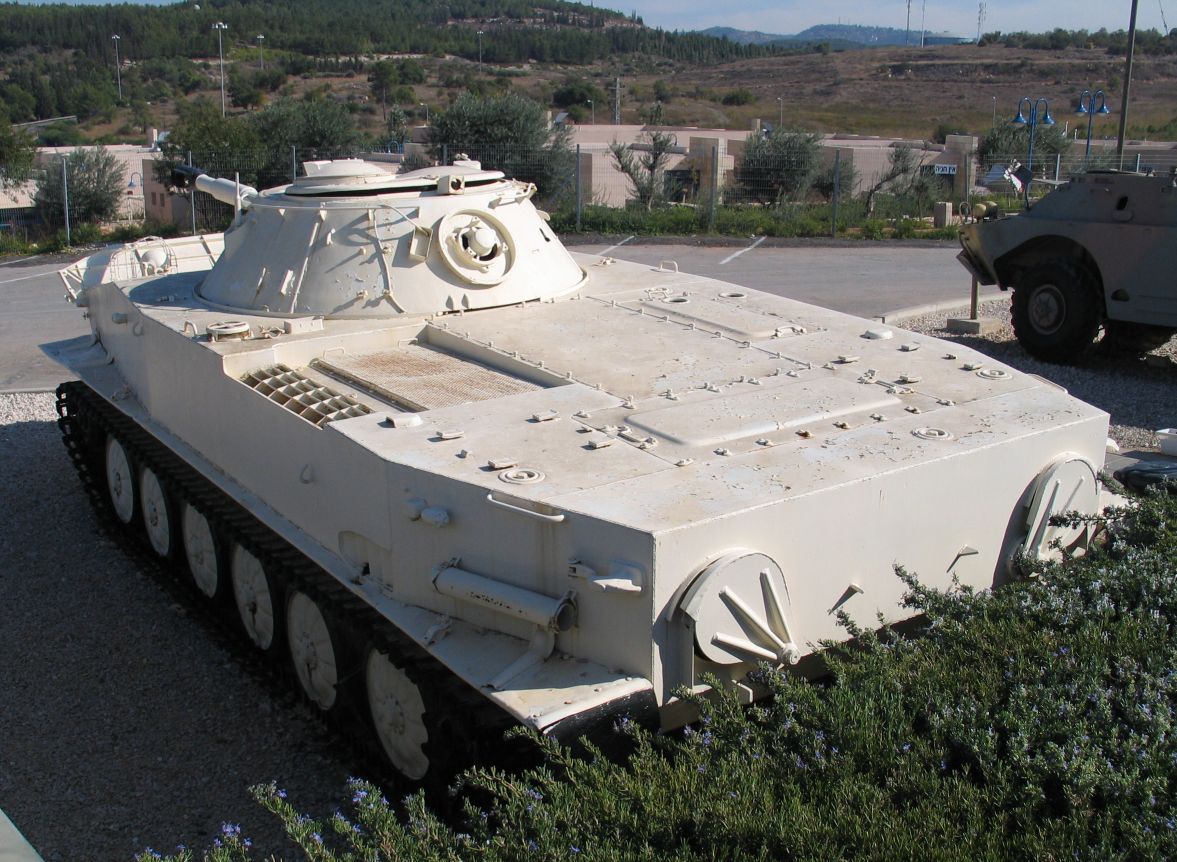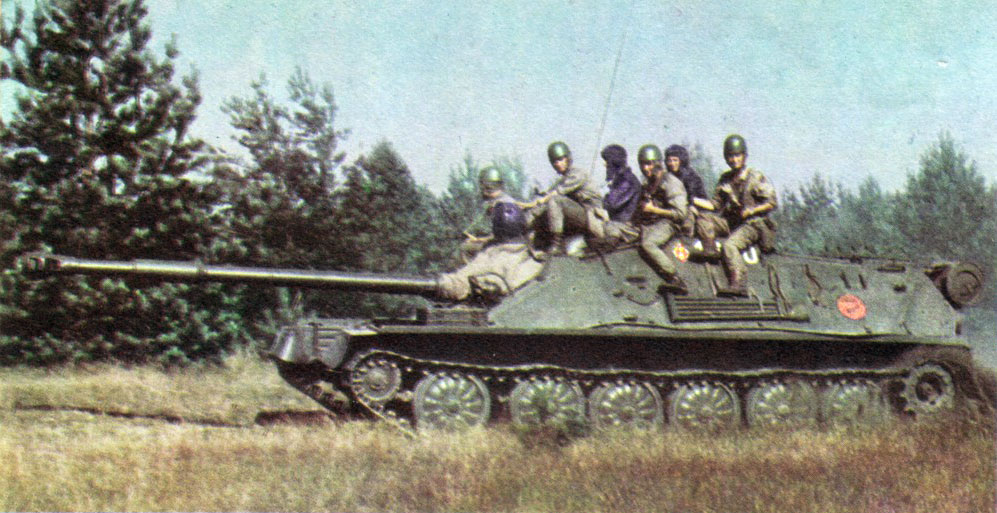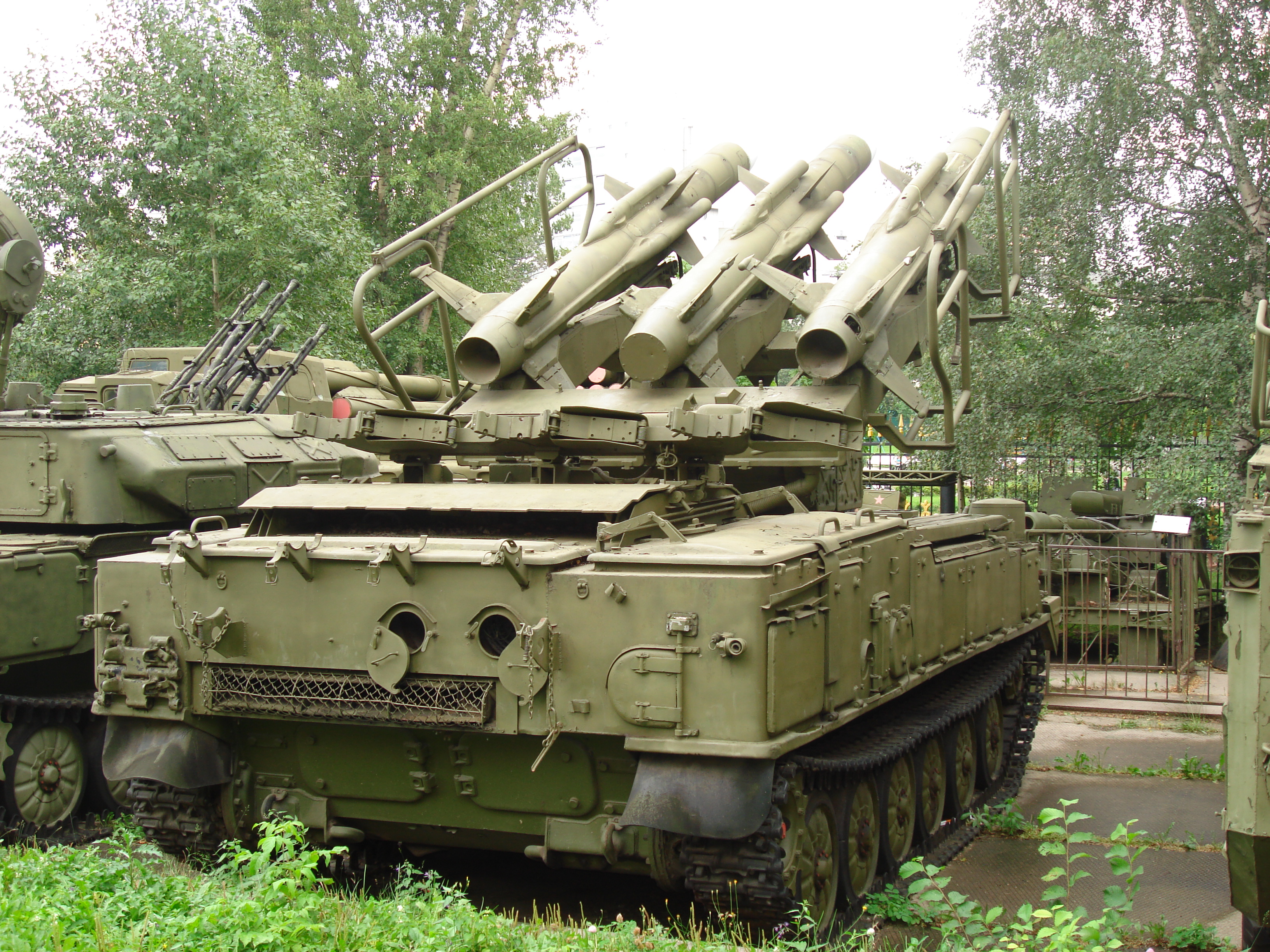|
PT-76
The PT-76 is a Soviet Union, Soviet amphibious vehicle, amphibious light tank that was introduced in the early 1950s and soon became the standard reconnaissance tank of the Soviet Army and the other Warsaw Pact armed forces. It was widely exported to other friendly states, like India, Iraq, Syria, North Korea and North Vietnam. The tank's full name is Floating Tank–76 (, ''plavayushchiy tank'', or ). ''76'' stands for the caliber of the main armament: the 76.2 mm D-56T series rifled tank gun. The PT-76 is used in the reconnaissance and fire-support roles. Its chassis served as the basis for a number of other vehicle designs, many of them amphibious, including the BTR-50 armored personnel carrier, the ZSU-23-4 self-propelled antiaircraft gun, the ASU-85 airborne self-propelled gun and the 2K12 Kub anti-aircraft missile launch vehicle. Development After World War II, the concept of light tanks was resurrected in the USSR. They were to be used in reconnaissance units and ther ... [...More Info...] [...Related Items...] OR: [Wikipedia] [Google] [Baidu] |
D-56T
The 76.2 mm D-56T series rifled tank gun is the tank gun used on the PT-76, which is the only known armoured vehicle to carry it. Description The D-56T is an anti-tank gun of 76.2mm calibre. It can fire five types of rounds, using a manual loader system, it has an effective fire rate of six to eight rounds per minute. It has a max effective range of approximately 1500 meters. This gun is 42 calibers long. A typical combat ammunition load consists of 24 x OF-350 Frag-HE, 4 x sub-caliber AP-T, 4 x AP-T and 8 x BK-350M HEAT rounds. The gun is usually mounted in an oval dish-type circular truncated cone turret with flat sloping sides which is mounted over the second, third, and fourth pair of road wheels. All PT-76s have a fume extractor for the main gun at the rear of the turret. Some were fitted with a multi-slotted muzzle brake. Most PT-76s typically feature this gun with a double-baffle muzzle brake, except the PT-76B, which is typically fitted with the D-56T gun with ... [...More Info...] [...Related Items...] OR: [Wikipedia] [Google] [Baidu] |
BTR-50
The BTR-50 (BTR stands for ''Bronetransporter'' (БТР, Бронетранспортер), literally "armored transporter") is a Soviet amphibious armored personnel carrier (APC) based on the PT-76 light tank. The BTR-50 is tracked, unlike most in the BTR series, which are wheeled. The BTR-50 shares many similarities with two other APCs, the OT-62 TOPAS and the Type 77. While the OT-62 is an improved copy of the BTR-50 developed jointly by Czechoslovakia and Poland, the Type 77, based on the Type 63 amphibious light tank developed by the People's Republic of China (PRC), is not a copy of the BTR-50. Description Like the PT-76, the BTR-50 has a flat, boat-shaped hull. Unlike the PT-76, it has a new superstructure added to the front of the vehicle. The hull of the BTR-50 is made of all-welded steel with the crew compartment in the front, the troop compartment in the center and the engine compartment at the rear. It has the ability to transport up to 20 fully equipped infant ... [...More Info...] [...Related Items...] OR: [Wikipedia] [Google] [Baidu] |
Light Tank
A light tank is a tank variant initially designed for rapid movements in and out of combat, to outmaneuver heavier tanks. It is smaller in size with thinner armor and a less powerful main gun, tailored for better tactical mobility and ease of transport and logistics. They are primarily employed in the screening, armored reconnaissance, skirmishing, artillery observation, and supplementing landing operations in a fire support role of expeditionary forces where larger, heavier tanks are unavailable or have difficulties operating safely or efficiently. The fast light tank was a major feature of the pre-World War II army buildup, where it was expected they would be used to exploit breakthroughs in enemy lines created by slower, heavier tanks, with the goal of disrupting communications and supply lines. Numerous small tank designs and " tankettes" were developed during this period and known under a variety of names, including the " combat car". Early light tank designs were ... [...More Info...] [...Related Items...] OR: [Wikipedia] [Google] [Baidu] |
Light Tank
A light tank is a tank variant initially designed for rapid movements in and out of combat, to outmaneuver heavier tanks. It is smaller in size with thinner armor and a less powerful main gun, tailored for better tactical mobility and ease of transport and logistics. They are primarily employed in the screening, armored reconnaissance, skirmishing, artillery observation, and supplementing landing operations in a fire support role of expeditionary forces where larger, heavier tanks are unavailable or have difficulties operating safely or efficiently. The fast light tank was a major feature of the pre-World War II army buildup, where it was expected they would be used to exploit breakthroughs in enemy lines created by slower, heavier tanks, with the goal of disrupting communications and supply lines. Numerous small tank designs and " tankettes" were developed during this period and known under a variety of names, including the " combat car". Early light tank designs were ... [...More Info...] [...Related Items...] OR: [Wikipedia] [Google] [Baidu] |
Volgograd Tractor Factory
, romanized_name = , former_name = , type = Open joint-stock company , traded_as = , industry = Machinery, Defence , fate = , predecessor = , successor = , founded = , founder = , defunct = , hq_location_city = Volgograd, Volgograd Oblast , hq_location_country = Russia , coordinates = , locations = , area_served = worldwide , key_people = , products = Tractors, Artillery, Combat vehicles , services = , revenue = RUB 873 million , revenue_year = 2011 , operating_income = , net_income = RUB 229 million , net_income_year = 2011 , aum = , assets = , equity = , owner = , num_employees = , num_employees_year = , parent = Concern Tractor Plants , divisions = , website = , footnotes = , intl = The Volgograd Tractor Plant (russian: Волгоградский тракторный завод, ''Volgogradski traktorni zavod'', or , ''VgTZ''), formerly the ''Dzerzhinskiy'' Tractor Factory or the Stalingrad Tracto ... [...More Info...] [...Related Items...] OR: [Wikipedia] [Google] [Baidu] |
Amphibious Vehicle
An amphibious vehicle (or simply amphibian), is a vehicle that is a means of transport viable on land as well as on or under water. Amphibious vehicles include amphibious Amphibious cycle, bicycles, Amphibious ATV, ATVs, Amphibious automobile, cars, Duckboats, buses, trucks, Railroad car, railway vehicles, combat vehicles and hovercraft. Classic landing craft are not amphibious vehicles as they do not offer any real land transportation at all, although they are part of amphibious warfare. Ground effect vehicles, such as ''ekranoplans'', will likely crash on any but the flattest of landmasses so are also not considered to be amphibious vehicles. General technical notes Apart from the distinction in sizes mentioned above, two main categories of amphibious vehicles are immediately apparent: those that travel on an air-cushion (Hovercraft) and those that do not. Amongst the latter, many designs were prompted by the desire to expand the off-road capabilities of land-vehicles t ... [...More Info...] [...Related Items...] OR: [Wikipedia] [Google] [Baidu] |
ASU-85
The ASU-85 (russian: Авиадесантная самоходная установка, АСУ-85, Aviadesantnaya Samokhodnaya Ustanovka, ASU-85 – airborne self-propelled mount) is a Soviet-designed airborne self-propelled gun of the Cold War era. From 1959, it began to replace the open-topped ASU-57 in service. It was, in turn, replaced by the BMD-1 beginning in 1969. Development history Development of a new assault gun for the armed forces started at the OKB-40 design bureau of the Mytishchi Machine Building Plant (MMZ), under the supervision of chief designer Nikolaj Aleksandrovich Astrov. The first Ob'yekt 573 prototype was ready for factory tests in the second half of 1953. This first vehicle was followed by a small batch of three improved vehicles that were evaluated by the armed forces in 1956–1957. The improved vehicles were powered by a new, horizontal six cylinder diesel engine, the YaMZ-206V, instead of the original V-6 of the PT-76. In 1958, the order to start ... [...More Info...] [...Related Items...] OR: [Wikipedia] [Google] [Baidu] |
Soviet Army
uk, Радянська армія , image = File:Communist star with golden border and red rims.svg , alt = , caption = Emblem of the Soviet Army , start_date = 25 February 1946 , country = (1946–1991)' (1991–1992) , branch = , type = Army , role = Land warfare , size = 3,668,075 active (1991) 4,129,506 reserve (1991) , command_structure = , garrison = , garrison_label = , nickname = "Red Army" , patron = , motto = ''За нашу Советскую Родину!(Za nashu Sovetskuyu Rodinu!)''"For our Soviet Motherland!" , colors = Red and yellow , colors_label = , march ... [...More Info...] [...Related Items...] OR: [Wikipedia] [Google] [Baidu] |
ZSU-23-4
The ZSU-23-4 "Shilka" is a lightly armored Soviet self-propelled, radar-guided anti-aircraft weapon system ( SPAAG). Etymology The acronym "ZSU" stands for ''Zenitnaya Samokhodnaya Ustanovka'' (russian: Зенитная Самоходная Установка), meaning "anti-aircraft self-propelled system"; the "23" signifies the bore diameter in millimeters; the "4" signifies the number of gun barrels. It is named after the Shilka River in Russia. Afghan soldiers nicknamed it the " sewing machine" due to the sound of firing guns. It is also referred to by its nickname of "Zeus", derived from the Russian acronym. History The previous Soviet self-propelled anti-aircraft gun ( SPAAG), the ZSU-57-2, was armed with two 57 mm autocannons; it was aimed optically using a basic tracking and lead calculating system. The ZSU-57-2 was not particularly successful despite its very powerful autocannons; given their large caliber, it could only carry 300 rounds, was inaccurate as it lac ... [...More Info...] [...Related Items...] OR: [Wikipedia] [Google] [Baidu] |
Tank Gun
A tank gun is the main armament of a tank. Modern tank guns are high-velocity, large-caliber artilleries capable of firing kinetic energy penetrators, high-explosive anti-tank, and cannon-launched guided projectiles. Anti-aircraft guns can also be mounted to tanks. As the tank's primary armament, they are almost always employed in a direct fire mode to defeat a variety of ground targets at all ranges, including dug-in infantry, lightly armored vehicles, and especially other heavily armored tanks. They must provide accuracy, range, penetration, and rapid fire in a package that is as compact and lightweight as possible, to allow mounting in the cramped confines of an armored gun turret. Tank guns generally use self-contained ammunition, allowing rapid loading (or use of an autoloader). They often display a bulge in the barrel, which is a bore evacuator, or a device on the muzzle, which is a muzzle brake. History World War I The first tanks were used to break through tre ... [...More Info...] [...Related Items...] OR: [Wikipedia] [Google] [Baidu] |
2K12 Kub
The 2K12 ''"Kub"'' (russian: 2К12 "Куб"; en, cube) (NATO reporting name: SA-6 "Gainful") mobile surface-to-air missile system is a Soviet low to medium-level air defence system designed to protect ground forces from air attack. "2К12" is the GRAU designation of the system. Each 2K12 battery consists of a number of similar tracked vehicles, one of which carries the 1S91 (SURN vehicle, NATO designation "Straight Flush") 25 kW G/ H band radar (with a range of ) equipped with a continuous wave illuminator, in addition to an optical sight. The battery usually also includes four triple-missile transporter erector launchers (TELs), and four trucks, each carrying three spare missiles and a crane. The TEL is based on a GM-578 chassis, while the 1S91 radar vehicle is based on a GM-568 chassis, all developed and produced by MMZ. Development The development of the 2K12 was started after 18 July 1958 at the request of the CPSU Central Committee. The system was set the require ... [...More Info...] [...Related Items...] OR: [Wikipedia] [Google] [Baidu] |
North Korea
North Korea, officially the Democratic People's Republic of Korea (DPRK), is a country in East Asia. It constitutes the northern half of the Korean Peninsula and shares borders with China and Russia to the north, at the Yalu (Amnok) and Tumen rivers, and South Korea to the south at the Korean Demilitarized Zone. North Korea's border with South Korea is a disputed border as both countries claim the entirety of the Korean Peninsula. The country's western border is formed by the Yellow Sea, while its eastern border is defined by the Sea of Japan. North Korea, like its southern counterpart, claims to be the legitimate government of the entire peninsula and adjacent islands. Pyongyang is the capital and largest city. In 1910, Korea was annexed by the Empire of Japan. In 1945, after the Japanese surrender at the end of World War II, Korea was divided into two zones along the 38th parallel, with the north occupied by the Soviet Union and the south occupied by the Unit ... [...More Info...] [...Related Items...] OR: [Wikipedia] [Google] [Baidu] |


.jpg)





